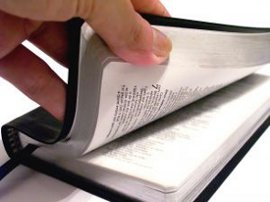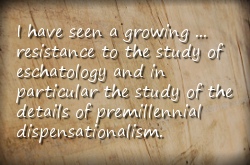Answering the 95 Theses Against Dispensationalism, Part 21
 Republished with permission from Dr. Reluctant. In this series, Dr. Henebury responds to a collection of criticisms of dispensationalism entitled “95 Theses against Dispensationalism” written by a group called “The Nicene Council.” Read the series so far.
Republished with permission from Dr. Reluctant. In this series, Dr. Henebury responds to a collection of criticisms of dispensationalism entitled “95 Theses against Dispensationalism” written by a group called “The Nicene Council.” Read the series so far.
Thesis 90
Despite the dispensationalists’ affirmation of the gospel as the means of salvation, their evangelistic method and their foundational theology, both, encourage a presumptive faith (which is no faith at all) that can lead people into a false assurance of salvation when they are not truly converted, not recognizing that Christ did not so quickly accept professions of faith (e.g., when even though “many believed in His name,” Jesus, on His part, “was not entrusting Himself to them.”—John 2:23b-24a).
Response
It comes as news to many of us poor benighted dispensationalists that we have one “evangelistic method.” Reformed believers could be excused for giving someone a sideways look were they likewise accused. Similarly, it is a long stretch to throw “presumptive faith” at all of us because it is a symptom of our “foundational theology.” We believe our foundational theology is biblical (or should be). The Master’s Seminary faculty do not fit the description above. After being on a theological faculty at a dispensational seminary myself I can say truthfully that “easy-believism” was abhorred. Many dispensationalists hold the same position on faith as John Calvin; it is a receptacle put in the heart by God. As one African Christian memorably put it, “faith is the hand of the heart.” (in Godet’s Romans). Even those holding tenaciously to Covenant theology ought to take Paul’s advice in 2 Cor.13:5 now and again.
 Republished, with permission, from
Republished, with permission, from  Republished with permission from
Republished with permission from 
Discussion